Top 10 Books for Aspiring Investors

Introduction:
In this blog post, I’ll explore the top 10 books for aspiring investors that offer insights, knowledge, and guidance for individuals looking to enhance their understanding of investing and improve their financial outcomes.
Investing is a crucial aspect of financial success, and it’s never too early or too late to start learning about it. Whether you’re a novice looking to dip your toes into the world of investing or a seasoned investor seeking to refine your strategies, reading books on the subject can be incredibly valuable.
1. "The Intelligent Investor" by Benjamin Graham:
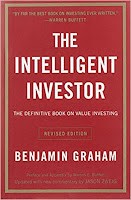
In this book, Graham stresses the significance of thorough analysis and long-term investing. He teaches readers how to evaluate stocks based on their intrinsic value rather than short-term market fluctuations. By focusing on fundamental analysis, Graham teaches investors to identify undervalued companies with strong fundamentals and growth potential.
“The Intelligent Investor” also explores the psychological aspects of investing, warning against emotional decision-making and the dangers of speculative behaviour. Graham’s teachings on risk management, portfolio diversification, and maintaining a disciplined approach to investing are particularly relevant for investors in any market environment.
With its practical wisdom and clear explanations, “The Intelligent Investor” continues to be a must-read for both novice and experienced investors. Graham’s principles have stood the test of time and serve as a guiding light for those seeking long-term financial success through value investing. It is one of the top 10 books for aspiring investors.
2. "Common Stocks and Uncommon Profits" by Philip Fisher:
In this book, Fisher emphasizes the importance of thoroughly researching companies before investing. He provides readers with a comprehensive framework for evaluating companies based on factors such as management quality, industry trends, competitive advantage, and long-term growth potential. Fisher’s approach revolves around investing in exceptional companies that have the potential for sustained profitability and market dominance.
One of the key concepts Fisher introduces is the “scuttlebutt” approach, which involves gathering information about a company through firsthand research, industry contacts, and analysis of its customers, suppliers, and competitors. This hands-on approach enables investors to gain a deeper understanding of a company’s prospects and make informed investment decisions.
“Common Stocks and Uncommon Profits” advocates for a patient and long-term investment approach, focusing on the growth potential of companies rather than short-term market fluctuations. Fisher’s book offers valuable insights and a systematic methodology for identifying and investing in high-quality stocks that have the potential to deliver uncommon profits over time. It is one of the top 10 books for aspiring investors.
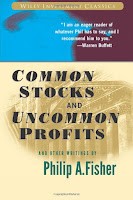
3. "A Random Walk Down Wall Street" by Burton Malkiel:

Malkiel introduces the concept of the efficient market hypothesis, which suggests that financial markets are efficient and that stock prices reflect all available information. He argues against active stock picking and market timing, advocating for a diversified portfolio of low-cost index funds instead. Malkiel believes that consistently outperforming the market is difficult, if not impossible, and that most individual investors would benefit from a passive investment approach.
In “A Random Walk Down Wall Street,” Malkiel also explores various investment vehicles, including stocks, bonds, mutual funds, and real estate investment trusts. He explains the risks and rewards associated with each and provides insights into portfolio construction and risk management.
The book offers valuable lessons on the pitfalls of speculative behavior, the importance of diversification, and the advantages of a long-term investment horizon. By presenting a strong case for passive investing, “A Random Walk Down Wall Street” encourages readers to adopt a disciplined, low-cost approach that aligns with their long-term financial goals. It is one of the top 10 books for aspiring investors.
4. "The Little Book of Common Sense Investing" by John C. Bogle:
Malkiel introduces the concept of the efficient market hypothesis, which suggests that financial markets are efficient and that stock prices reflect all available information. He argues against active stock picking and market timing, advocating for a diversified portfolio of low-cost index funds instead. Malkiel believes that consistently outperforming the market is difficult, if not impossible, and that most individual investors would benefit from a passive investment approach.
In “A Random Walk Down Wall Street,” Malkiel also explores various investment vehicles, including stocks, bonds, mutual funds, and real estate investment trusts. He explains the risks and rewards associated with each and provides insights into portfolio construction and risk management.
The book offers valuable lessons on the pitfalls of speculative behavior, the importance of diversification, and the advantages of a long-term investment horizon. By presenting a strong case for passive investing, “A Random Walk Down Wall Street” encourages readers to adopt a disciplined, low-cost approach that aligns with their long-term financial goals. It is one of the top 10 books for aspiring investors.
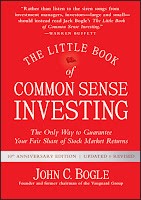
5. "Thinking, Fast and Slow" by Daniel Kahneman:
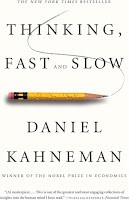
Malkiel introduces the concept of the efficient market hypothesis, which suggests that financial markets are efficient and that stock prices reflect all available information. He argues against active stock picking and market timing, advocating for a diversified portfolio of low-cost index funds instead. Malkiel believes that consistently outperforming the market is difficult, if not impossible, and that most individual investors would benefit from a passive investment approach.
In “A Random Walk Down Wall Street,” Malkiel also explores various investment vehicles, including stocks, bonds, mutual funds, and real estate investment trusts. He explains the risks and rewards associated with each and provides insights into portfolio construction and risk management.
The book offers valuable lessons on the pitfalls of speculative behavior, the importance of diversification, and the advantages of a long-term investment horizon. By presenting a strong case for passive investing, “A Random Walk Down Wall Street” encourages readers to adopt a disciplined, low-cost approach that aligns with their long-term financial goals. It is one of the top 10 books for aspiring investors.
6. "The Essays of Warren Buffett" edited by Lawrence A. Cunningham:
Cunningham has skillfully curated Buffett’s writings, presenting them in a cohesive and organized manner. The book covers a wide range of topics, including value investing, business analysis, corporate governance, and the importance of a long-term perspective. Buffett’s clear and concise writing style makes complex concepts accessible to both seasoned investors and those new to the world of finance.
“The Essays of Warren Buffett” demonstrates Buffett’s disciplined approach to investing, emphasizing the importance of thorough research, rational decision-making, and investing in businesses with enduring competitive advantages. He provides practical advice on topics such as stock valuation, portfolio management, and the pitfalls of market speculation.
Through this book, readers gain a deeper understanding of Buffett’s principles and strategies, which have guided him to remarkable success. The timeless wisdom contained within these essays serves as a valuable resource for investors seeking to develop their own investment approach and cultivate a long-term mindset.
Overall, “The Essays of Warren Buffett” is an indispensable read for anyone interested in investing, as it offers profound insights and lessons from one of the most accomplished investors in history. It is one of the top 10 books for aspiring investors.
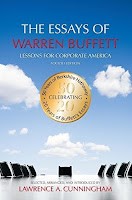
7. "The Dhandho Investor" by Mohnish Pabrai:
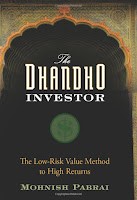
In this book, Pabrai emphasizes the importance of investing in businesses with asymmetric risk-reward profiles. He advocates for taking calculated risks by investing in undervalued companies with a margin of safety. Pabrai’s approach combines the principles of value investing with a contrarian mindset.
“The Dhandho Investor” offers practical insights into identifying businesses with a durable competitive advantage and predictable cash flows. Pabrai provides a step-by-step framework for conducting in-depth research and analysis to uncover investment opportunities that offer significant upside potential.
Furthermore, the book emphasizes the importance of focused investing and maintaining a concentrated portfolio of high-conviction investments. Pabrai encourages readers to adopt a long-term perspective and resist the temptation to trade frequently based on short-term market fluctuations.
“The Dhandho Investor” is a valuable resource for investors looking to refine their investment approach and think like successful entrepreneurs. Pabrai’s blend of value investing principles, contrarian thinking, and risk management strategies makes this book a thought-provoking read for individuals seeking to enhance their investment decision-making skills. It is one of the top 10 books for aspiring investors.
8. "The Four Pillars of Investing" by William J. Bernstein:
Bernstein explains the theoretical concepts behind investing, including risk and return, asset allocation, and diversification. He provides readers with a solid understanding of the fundamental principles that drive investment performance.
Through an examination of financial history, Bernstein demonstrates how different asset classes have performed over time and the lessons we can learn from past market cycles. He emphasizes the importance of a long-term perspective and staying the course during market fluctuations.
“The Four Pillars of Investing” also delves into the psychological aspects of investing, exploring the biases and emotions that can hinder sound decision-making. Bernstein offers strategies for managing emotions, avoiding common pitfalls, and maintaining discipline in the face of market volatility.
Lastly, Bernstein discusses the importance of understanding businesses and their financial statements. He guides readers through the process of analyzing companies and making informed investment choices.
With its holistic approach, “The Four Pillars of Investing” equips investors with the knowledge and tools to build a solid investment strategy. Bernstein’s clear explanations, historical insights, and emphasis on rational decision-making make this book an invaluable resource for both novice and experienced investors seeking long-term financial success. It is one of the top 10 books for aspiring investors.
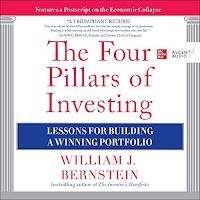
9. "The Warren Buffett Way" by Robert G. Hagstrom:
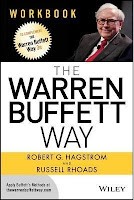
Hagstrom delves into the key concepts that underpin Buffett’s investment philosophy, such as economic moats, competitive advantage, and the importance of a long-term perspective. He explores Buffett’s strategies for identifying undervalued companies, analyzing financial statements, and making well-informed investment decisions.
“The Warren Buffett Way” also delves into the mindset and personal qualities that have contributed to Buffett’s success. Hagstrom examines Buffett’s discipline, patience, and ability to think independently, providing readers with a deeper understanding of the psychological aspects of investing.
Through detailed case studies and examples, Hagstrom illustrates how Buffett applies his principles in real-world investing scenarios. The book offers valuable lessons on the importance of thorough research, the pitfalls of market speculation, and the benefits of focusing on intrinsic value.
Overall, “The Warren Buffett Way” is an excellent resource for investors looking to learn from the strategies and wisdom of one of the most revered investors of our time. Hagstrom’s meticulous analysis and clear explanations make this book a valuable addition to any investor’s library. It is one of the top 10 books for aspiring investors.
10. "Reminiscences of a Stock Operator" by Edwin Lefèvre:
Lefèvre’s work explores Livermore’s journey as a speculator, delving into the psychological aspects of trading, risk management, and market speculation. Through Livermore’s experiences, readers gain insights into the dynamics of the stock market, the impact of emotions on decision-making, and the importance of maintaining discipline and emotional control.
“Reminiscences of a Stock Operator” offers a fascinating narrative that brings to life the challenges and triumphs of a speculator in the early 20th century. Lefèvre’s engaging storytelling style, coupled with Livermore’s personal anecdotes and lessons learned, make this book an entertaining and educational read for investors of all levels of experience.
The book also highlights the importance of understanding market psychology, recognizing patterns, and adapting to changing market conditions. It serves as a reminder that successful investing requires continuous learning, adaptability, and a deep understanding of one’s own strengths and weaknesses.
Overall, “Reminiscences of a Stock Operator” provides a timeless exploration of the art and psychology of stock speculation. It offers valuable insights that can help investors develop a nuanced understanding of the market and improve their decision-making abilities. It is one of the top 10 books for aspiring investors.
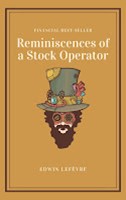
Top 10 Books for Aspiring Investors : Conclusion
Building a solid foundation of investing knowledge is essential for anyone seeking financial success. The top 10 books for aspiring investors mentioned above provide a wealth of information, wisdom, and guidance for aspiring investors. From timeless classics to modern insights, these books cover a wide range of topics, including value investing, index investing, behavioural finance, and successful investment strategies. By immersing yourself in these books, you can gain valuable insights that will help you make informed investment decisions and navigate the complexities of the financial markets with confidence. Remember, investing is a lifelong learning journey, and these books serve as valuable companions along the way.
Explore more Blogs at https://touchtheskyonline.com/ and also at https://mission-minded-mentors.blogspot.com/
